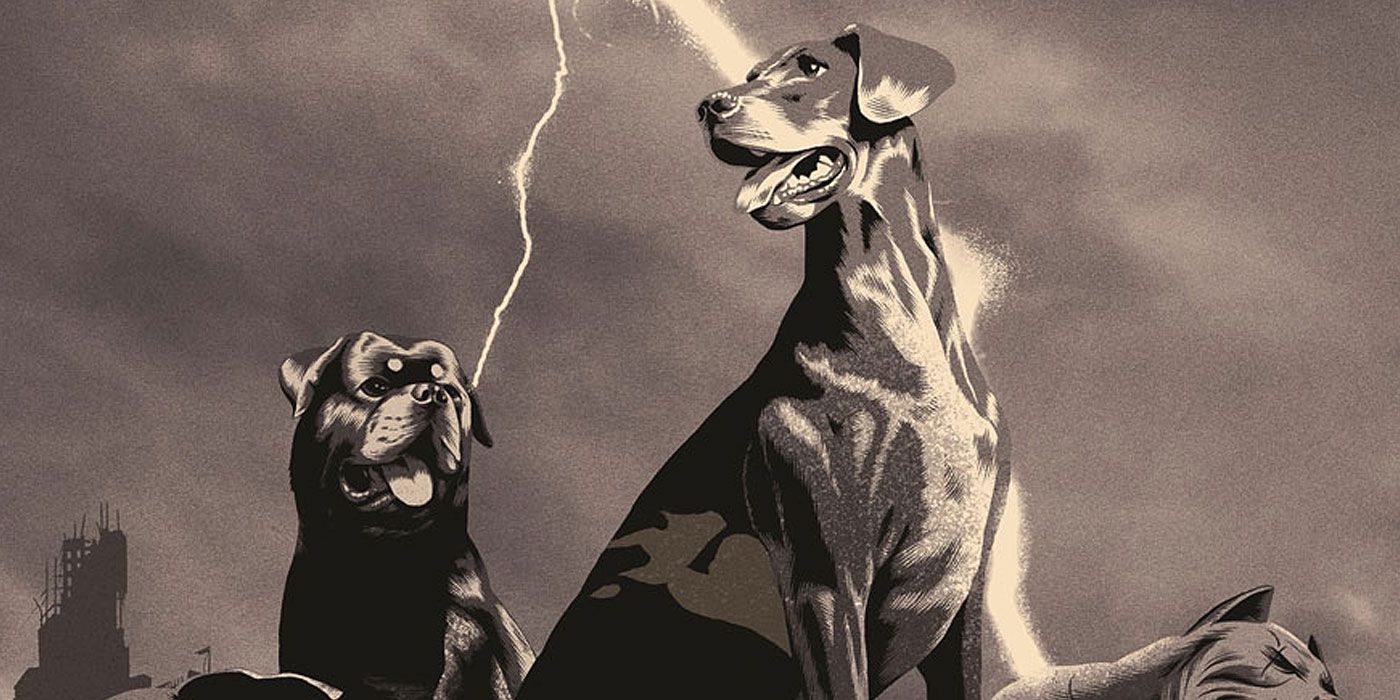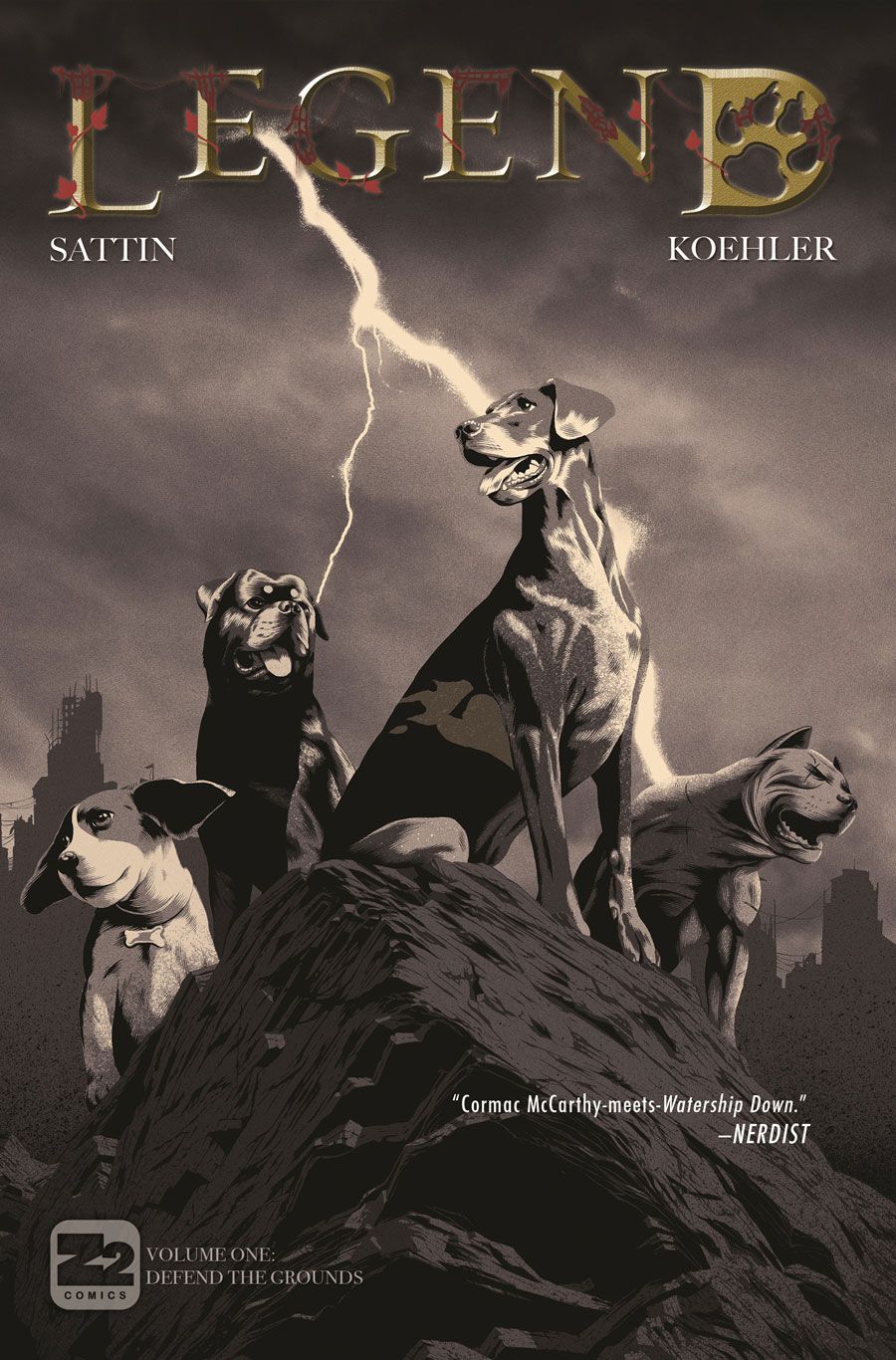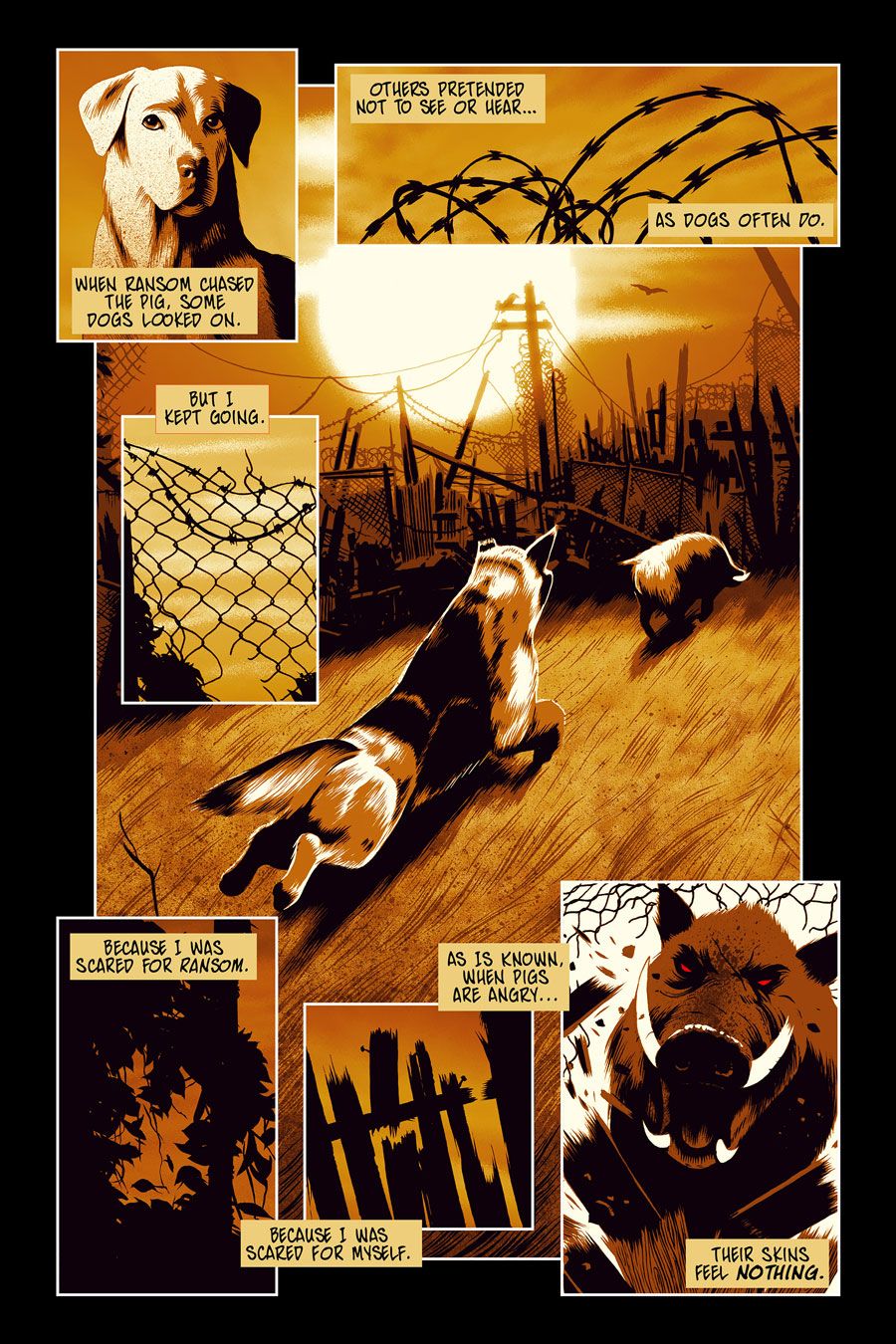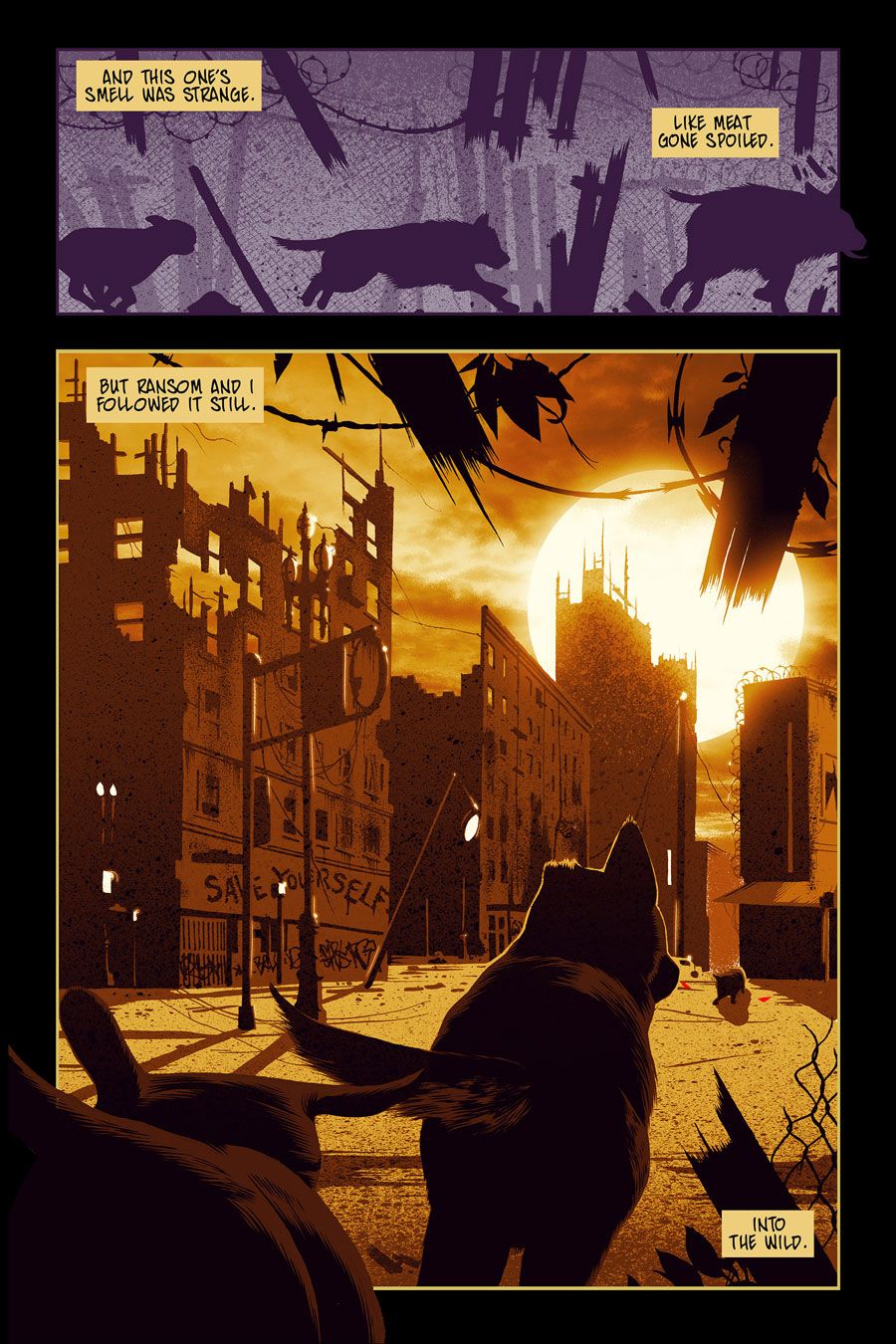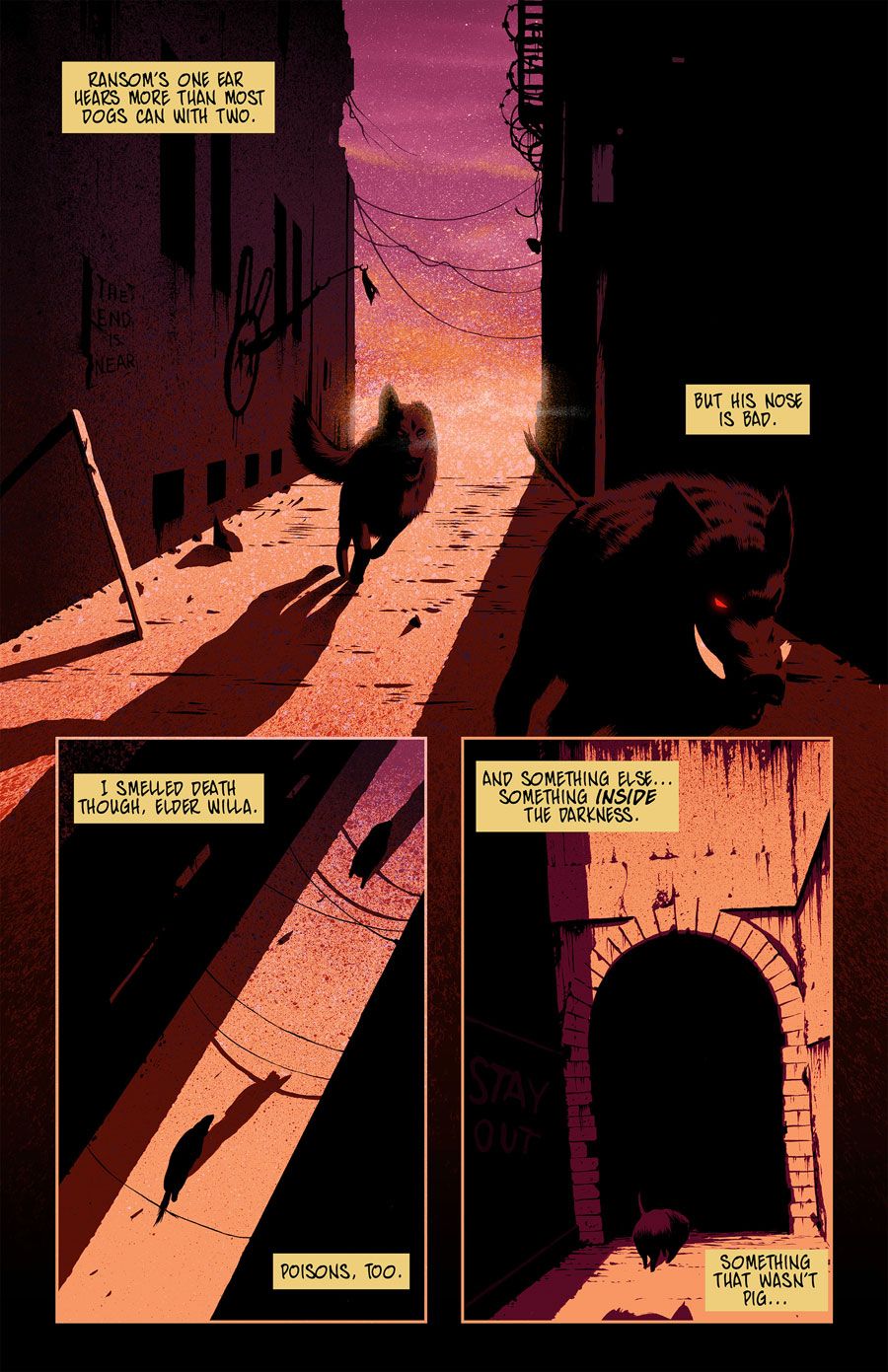You think you know how you’d survive the zombie apocalypse, but let’s be clear on something: you don’t. None of us do. That’s why it’s the apocalypse. The more pertinent question would be, what happens to the surviving members of our homes - our pets?
Writer Samuel Sattin and illustrator Chris Koehler go deep in answering that question. Channelling the world-building and mythology of Richard Adams’ classic novel “Watership Down,” the duo follow a dog named Legend, as he becomes head of his pack. Tensions with the cats are high. And there’s a monster out there killing both canine and feline. Embarking on a quest for answers and salvation, Legend and his crew face the Scentless and the wilds of post-humanity New York City.
RELATED: Legend #1 (Preview)
CBR chatted with Sattin and Koehler about “Legend,” the first arc of which has recently been collected as a trade paperback from Z2 Comics. The creative team spoke about each how each partner made his jump to comics and the freedom of viewing the end of the world through animals’ eyes, and they showed off a striking animated trailer for their book.
CBR: Stories from the point of view of dogs and/or cats are fairly common. Why is “Legend” an animal protagonist story?
Samuel Sattin: I grew up with animal stories, and as my obsession with them developed (along with my identity as a writer) I knew that one day I would try to create one myself. I only had to find the right way to do so. “Legend” began as just a small scene in my head, years ago, of a tribe of dogs in a tortured urban setting, huddling over the corpse of their fallen leader. From that scene “Legend” grew to become this full world. It’s a story of survival, belief, and perception told from the perspective of creatures we think we know well, and yet exist in a world all their own.
Does the animal aspect give you new perspective on the apocalyptic tale genre?
Sattin: Absolutely. Without giving too much away, “Legend,” as both a story and concept, couldn’t exist with people as its main characters. Its central premise is built upon the ways in which animals perceive and navigate a post-apocalyptic world. The evils of humanity are responsible for the mess the world is in, yes, but it’s the creatures left behind that have to cope and rebuild that are important. If this story were from a human perspective, then its characters would be the ones responsible for the downfall. And if that were the case, notions of innocence and heroism would have to be completely recalibrated. Essentially, I’d say that writing “Legend” really tested the limitations of the post-apocalyptic genre, which can be pretty limiting from the human perspective, as far as the themes you can explore. An animal perspective on the genre lets you rewrite some of the rules, and uncover new ideas about what happens when the world falls from grace.
Chris Koehler: The other aspect to the animal viewpoint is that they already see the world through a lens that we would find alien. They view the city as the wilderness. A wall of chain link fence and broken boards is the “thorn wall.” This lets us show the apocalypse through a fresh perspective. This also means that the entirety of existence is limited to the empirical knowledge of the animals. The story isn't about the big questions of why the world is the way it is, it's a more intimate story of survival.
The dogs and cats each have their own hierarchy and mythology. Were those social structures and histories built on/inspired by any previous animal protagonist literature?
Sattin: “Watership Down” is an obvious influence on the mythology aspect of “Legend.” Richard Adams went to great and glorious pains to create a belief system for is rabbit kin, so that their entire world was framed through the lens of prophecy. I love this aspect of that tale, and wanted to try and offer my take. It’s also really interesting because, typically, humans use animals in mythology to represent certain traits and ideas. Animals like lions, donkeys, foxes, doves, and monkeys are used to convey parables for humans to enrich themselves. In “Legend,” I wanted to take a crack at imagining how animals saw the divine…particularly as it pertains to a world with humanity as master.
Samuel, after previously writing two novels (one with obvious comic book overtones), why did you move to comics for this story?
Sattin: Because comics kick ass! I’m joking (not really). I’ve been a huge comics reader for I don’t even know how long. My first novel even tried to dissect them a little. But I think a more mature answer would be that I find the mode of storytelling completely unique. Comics and novels both tell stories, and yet they operate under entirely different constraints. For “Legend” in particular, I could have written it as a novel, sure, but the comics format allowed for an immediate visual experience, with the characters and world available in very immediate, detailed ways. Working with Chris in particular was huge, being that I believe he’s the only one that could really make this story come to life. The mysterious, seemingly barren landscapes, the character expressions and multitude of visual details that have you coming back to pages and panels again and again, that’s the sweet spot. Also, collaboration is a beautiful thing.
Chris, how did you get involved?
Koehler: I met Sam in the MFA in Comics program at California College of the Arts. I was actually his comics techniques teacher. Sam and I have a lot of the same interests so we stayed in touch and became friends after the session ended. I also followed Sam's work as an author, as he often wrote about things I was interested in, such as video games and horror movies. I quickly became a fan of his work (in fact, my favorite novel of 2015 was “The Silent End,” Sam's second novel). After teaching in the Comics program for a few years, I felt it necessary to actually pursue comics and prove my worth. I reached out to a couple people to collaborate. Sam and I clicked immediately as a creative team, and we put together several pitches, some of Sam's ideas and some of mine. “Legend” is the one that got picked up, so we ran with it.
You’re both well established in your field, Samuel as a writer and Chris as an illustrator, but you’re also both new to creating comics. How did you find the learning curve?
Sattin: Steep, but exciting. Writing a novel is like going on a very, very, very long walk that can take up to a year or two, and ruin you a little along the way. But you have a lot of time to think. A lot of time to pace yourself and make sure you’re heading the right direction. Writing comics is like strapping yourself onto a jet engine, pressing the big red ignition button, and hoping you hit the target when you land 30 seconds later (if you don’t explode). Okay, maybe I’m ratcheting up the melodrama, but in my case, at least, I had to plan heavily, and being on a monthly schedule takes away the luxury of extra mental time I’m normally used to. That said, man, it’s exciting to keep up the pace, and the satisfaction that comes from handing a script over on time is like no other.
Koehler: Everyone talks about how grueling comics are, and I knew it would be hard going in, but nothing could have prepared me for the intensity. I have a really good work ethic and I work at a fairly fast pace, but doing a monthly comic pushed me to the absolute edge of my effort and sanity. As a result, my process got much more efficient, I learned new tools, and I got a lot less sleep. What also made the process difficult is that Sam and I weren't acclimating to just one new role each, but several. I had full art duties on the comic, from penciling, to inking, to coloring. Sam even did the lettering. Normally it takes a team of four or five highly experienced people to make a monthly comic, we were two tenderfeet trying to fill five jobs.
How did this collaborative process match or differ from your expectations?
Sattin: A lot of our friends and colleagues have asked us this question, and are always surprised with the answer: it actually went really well. In terms of story collaboration, Chris and I are pretty in sync, so there’s not a lot of dissonance. Sometimes he makes my life tricky with taking up all my precious word space on panels, but I do the same for him by writing too many words to begin with.
Koehler: All credit to Sam. He is incredibly gracious with sharing his world with me. He is always open to ideas, unselfish, and excited. He also has great feedback for me and I respect his opinion on the art. More than that, doing comics is like being in a foxhole together. It is high intensity, high stress, all the time. If the personalities involved don't jibe, nothing works. So at a fundamental level, we just get along. I will say though, Sam's optimism and good attitude are what keep this train on the tracks.
When did Z2 come into the picture? How valuable were they in getting up to speed with the art form and the industry?
Sattin: Z2 was introduced to us via our agent, who brokered the agreement. And wow, did they bring us up to speed quick. We had the baptism by fire introduction to comics, and I feel like we’re better for it. If I could go back in time and appear to my pre-comics self in a dream, I’d say, “hold on to your f*cking hat.” I say all of this in the fondest way possible, however. Z2 really introduced us to so many aspects of the industry I’d never have considered. They’re very knowledgeable people who have our best interests in mind.
Does “Legend” have a specific ending in mind? How long will it run?
Sattin: It definitely does. Right now, I’m concentrating on this graphic novel release, but there is a concluding arc to “Legend” on the horizon, and fans of the series will be sure to hear more soon.
Koehler: It turns out it was all a dream. All of it.
Sattin: Damn it, Chris. Spoilers…
What’s next for you both?
Sattin: Readers should definitely anticipate hearing more from the world of “Legend.” I also have a serialized novel that just got the go ahead, and I hope it will be as strange and scary as I expect. All that along with new comic and novel ideas should keep me very busy in the months ahead.
Koehler: As much illustration as possible. I'm working on a wordless illustrated book called “save yourself” and preparing for a solo show in April. Other than that, I co-own and run a gallery in San Francisco called Sketchpad Gallery. We have a full program of events on deck and that manages to suck up every free moment of my time.
“Legend” v.1 is currently available for Z2 Comics.

